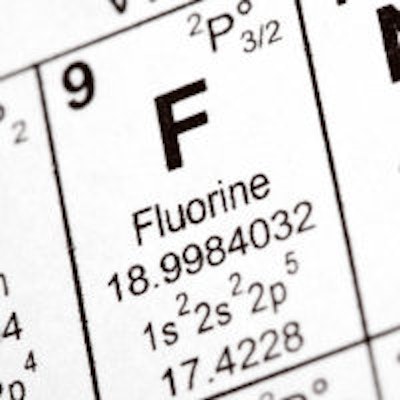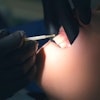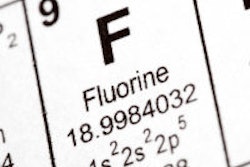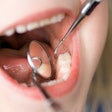
It seems like a common sense approach. Fluoride, however maligned in some circles, has benefits for teeth in ways that are supported by science. Now, a new retrospective longitudinal analysis examining performance measures (PM) for appropriate fluoride use has gauged its effectiveness in preventing restorative work for patients at a high risk for caries.
The study, developed by the staff of the U.S. Department of Veterans Affairs (VA) Office of Dentistry, showed "an association between initiating the fluoride PM and a change in percentages of restoration placement from an increasing slope to a gradually decreasing slope," the authors noted in Journal of the American Dental Association (May 2014, Vol. 145:5, pp. 443-451). "These findings demonstrate the success of a large clinical care system in increasing delivery of preventative care to patients with high caries-development risk by using widespread educational interventions and a quality PM."
Many VA patients are at high risk for caries and, as part of an expressed commitment to reduce caries in the VA population, the VA Office of Dentistry began implementing the fluoride PM in fiscal year (FY) 2009, which began on October 1, 2008. After identifying which patients were high-risk, defined as those who had two or more single-tooth restorations placed within the past year, the patients were provided with either a professional fluoride application or a prescription for it.
“The system-wide clinical implications make these results extremely significant.”
The rates of restorations for all veterans eligible for continuous, dental comprehensive care were evaluated, as well as the high-risk subpopulation for each fiscal year from 2005 through 2012. The VA's digital patient records were used to analyze several datasets.
The researchers found that there were, on an average, 225,000 continuous and comprehensive care patients seen each year, with an increase from 180,000 in 2005 to 286,000 in 2012. And in 2005, 71,000 patients had one or more restorations, a number that rose to 107,000 in 2012, but the percentage of patients receiving them decreased.
During the first quarter of fiscal year 2008, 52% of the high-risk patients received fluoride treatment; the percentage increased to 75% during the same quarter of the following year. By the last quarter considered in the study, the fourth quarter of 2012, 94% of these patients were receiving fluoride.
The authors noted that VA clinics were expected to meet progressively higher standards for the percentage of high-risk patients that received fluoride each year until they hit a minimum of 90% in 2011, a number that remains in place.
While examining the data, the researchers observed that "all measures of restoration rates, excluding mean number of surfaces, consistently increased from FY 2005 through FY 2008 but began falling in FY 2009, the year that the PM was initiated." The percentage of all veterans with any restoration prior to FY 2009, based on the average of years 2005 through 2008, dipped from 40% to 37% in FY 2012. Meanwhile, the percentage of patients classified as "high risk" decreased by nearly 9% after the PM was initiated.
However, there was only a small percentage change in the number of patients with a high caries risk who needed new restorations, just over 3%, but there was a "more significant decrease" in the mean number of new restorations, 10%, and mean number of newly restored surfaces, 14%.
"Findings from this study demonstrate the decreases in the percentage of receipt of new restorations among all eligible veterans at high caries-development risk, as well as a reduction in number of restorations and surfaces in both populations," the authors explained. While they described the gains as "modest," they felt that it was evidence supporting the success of the VA's shift from a "surgical model" of care to a "medical model."
The change in restorations for all categories was statistically significant across all measures from fiscal year 2008, prior introducing the performance measures, through fiscal year 2012, after it had been instituted. Additionally, the researchers found a downward bend of the cost curve when accounting for the performance measures and reduction in restorations.
"Although the results may have questionable clinical impact on an individual basis, the system-wide clinical implications make these results extremely significant, both statistically and clinically," the researchers concluded.



















